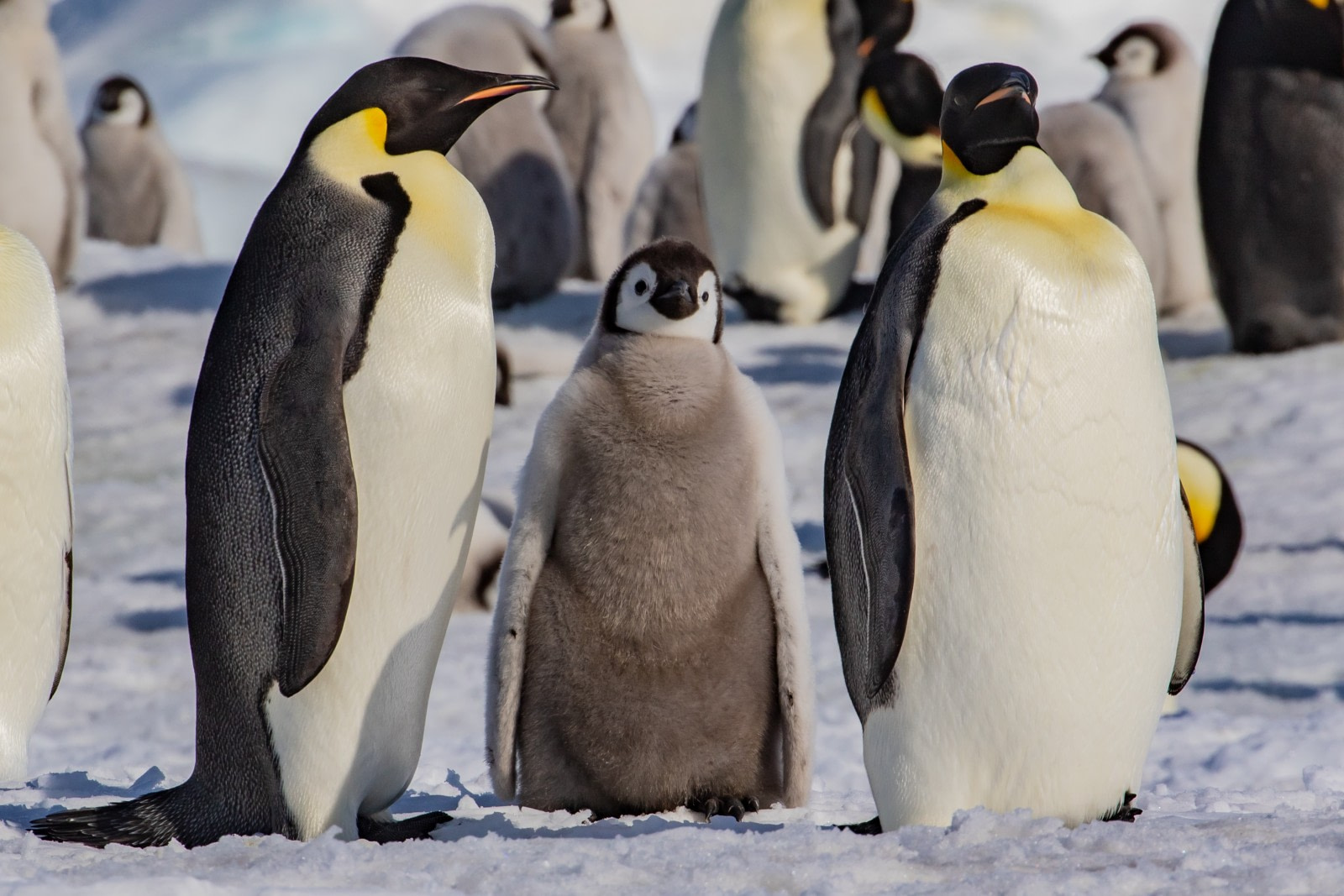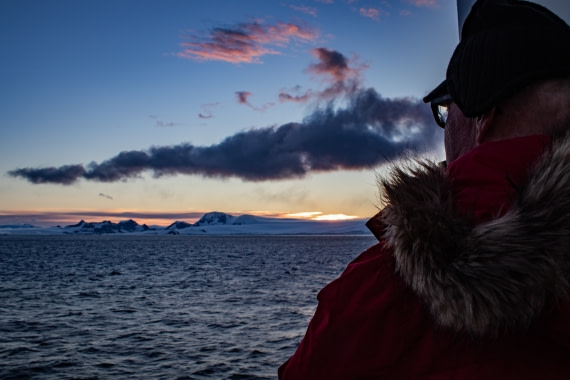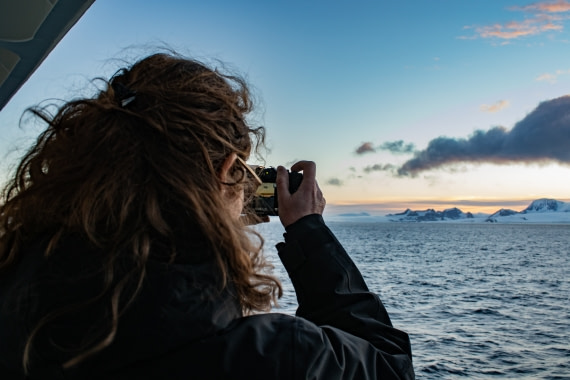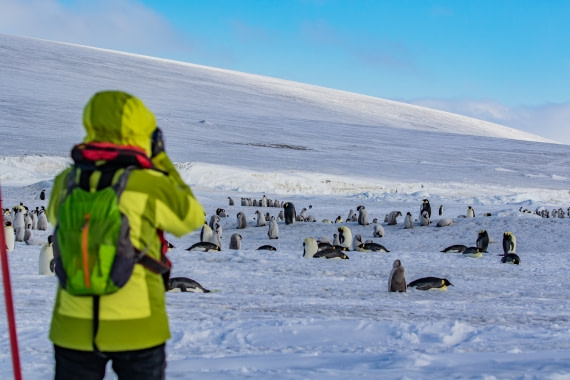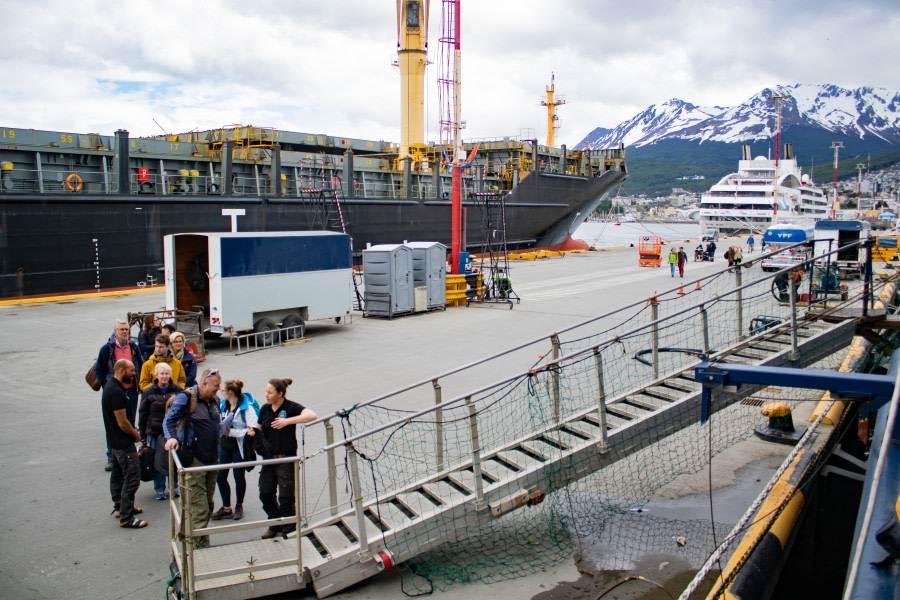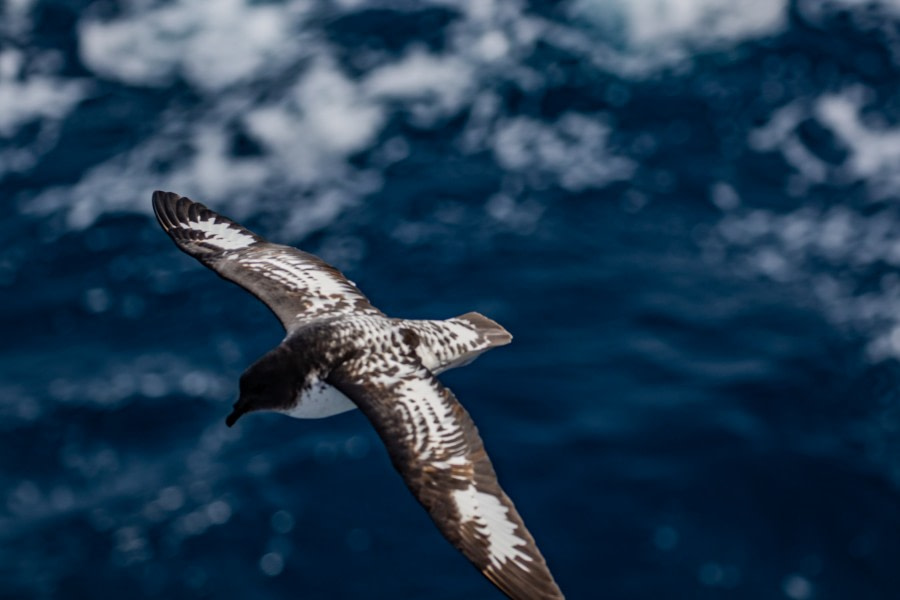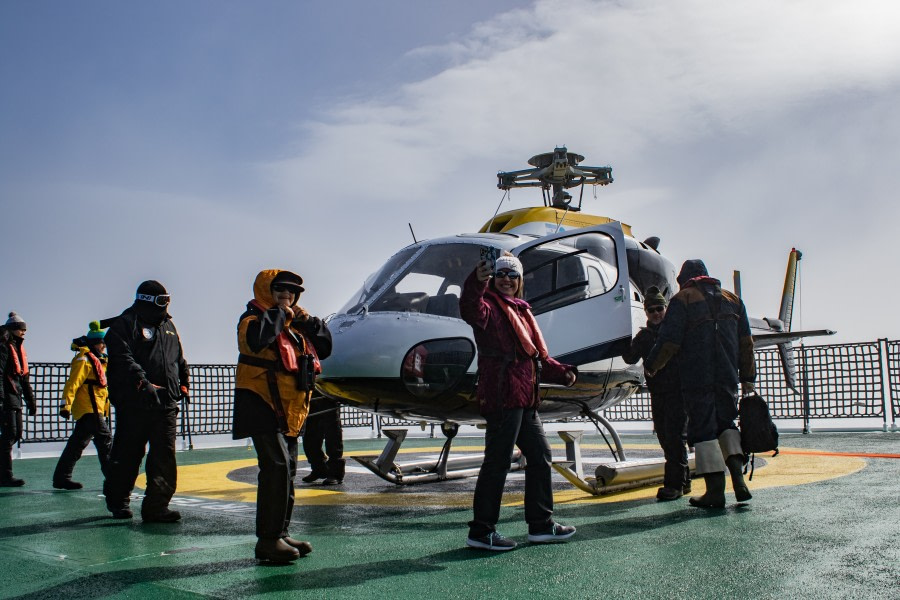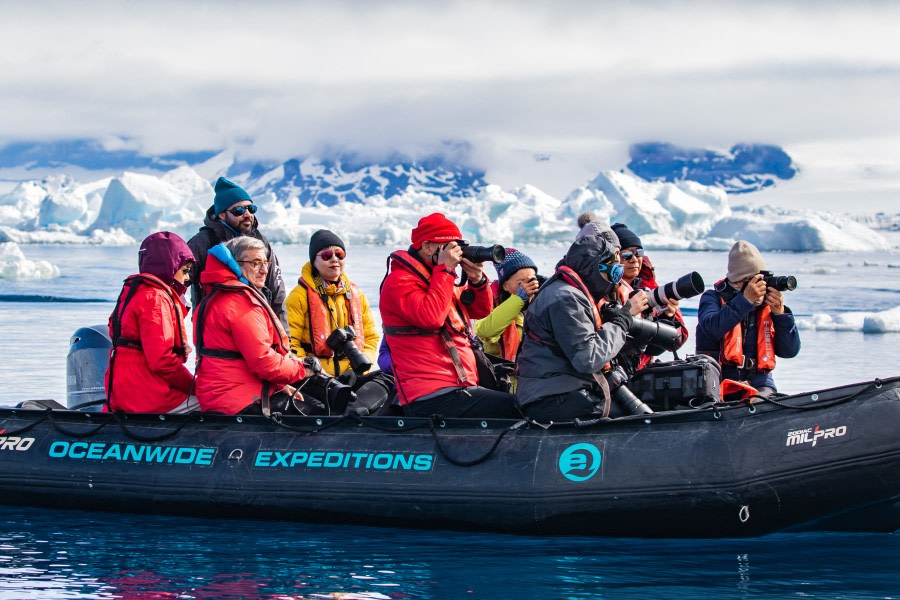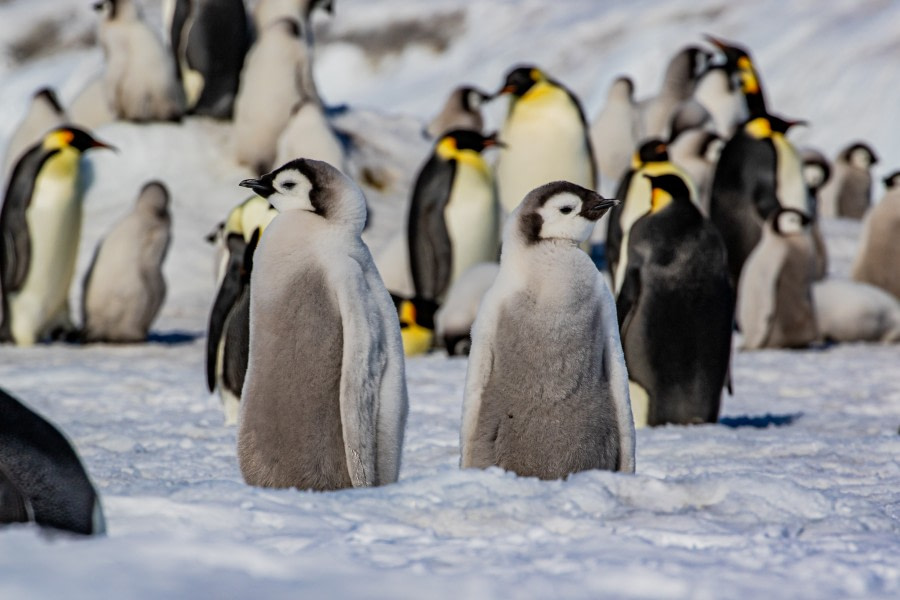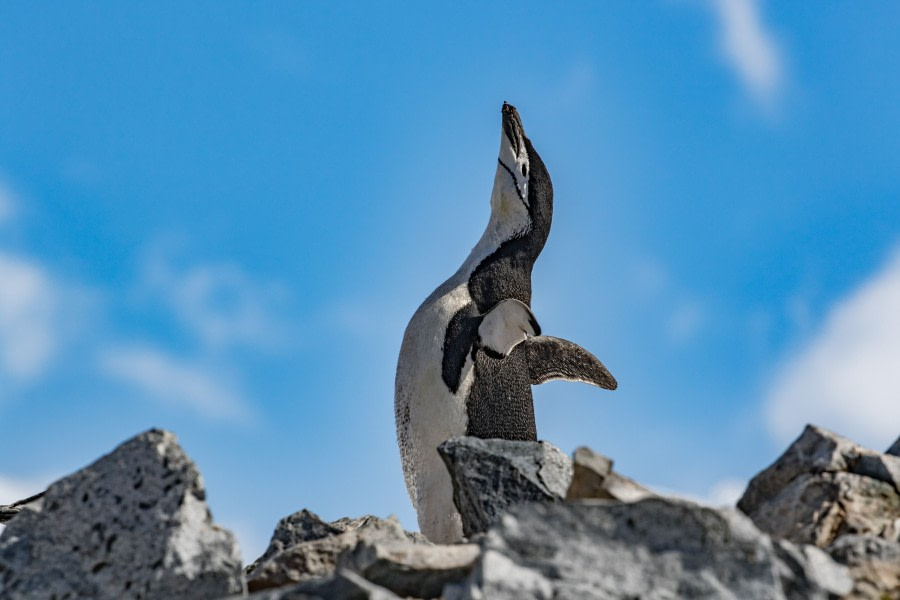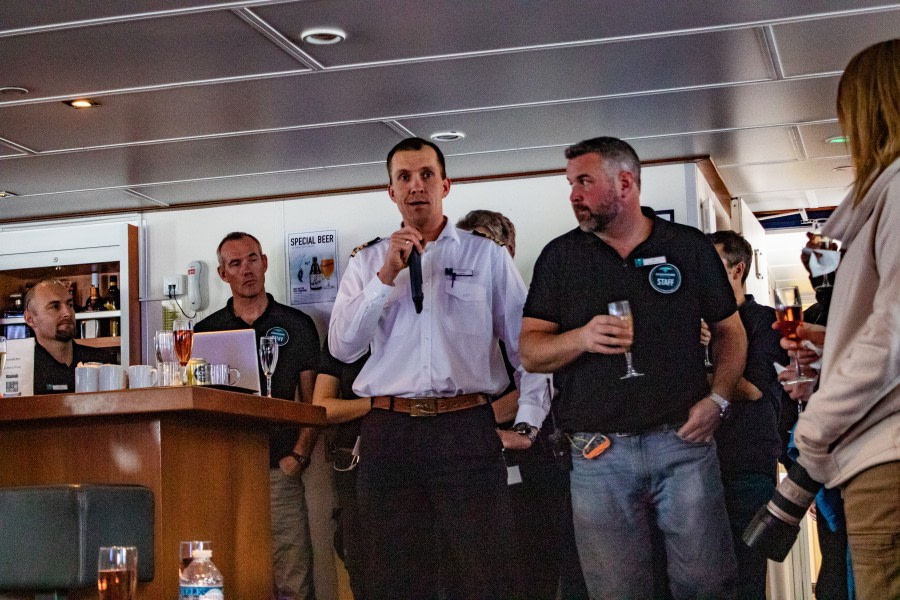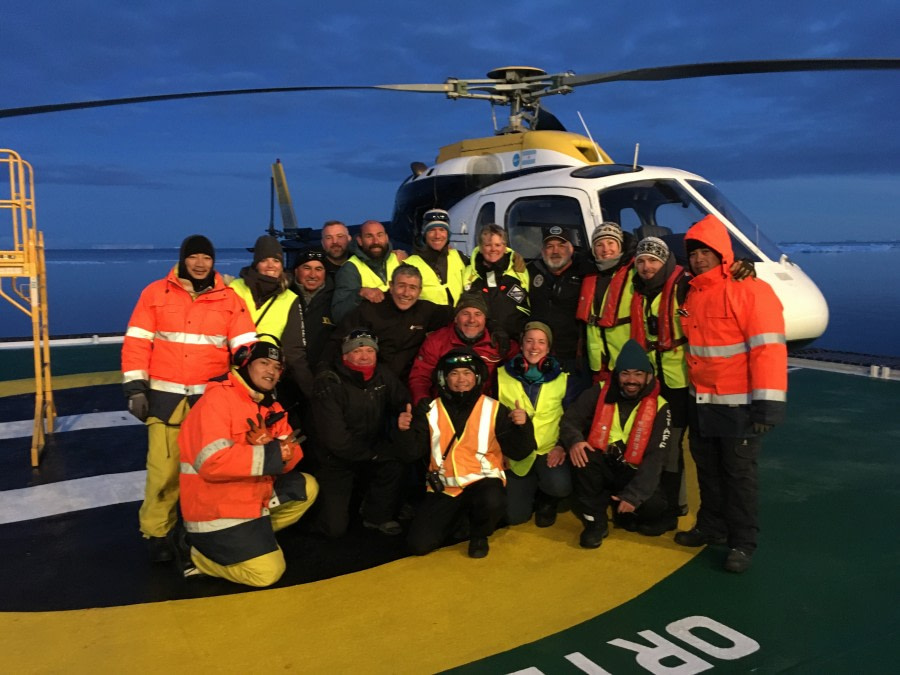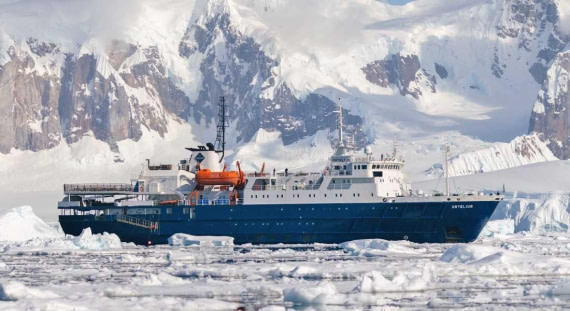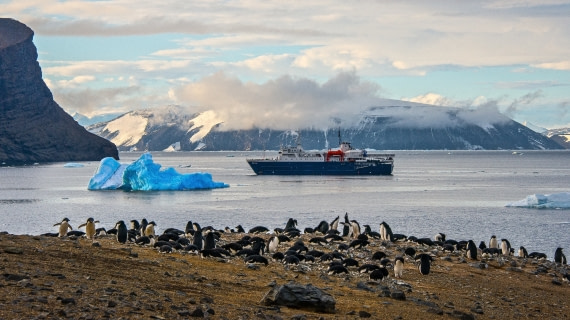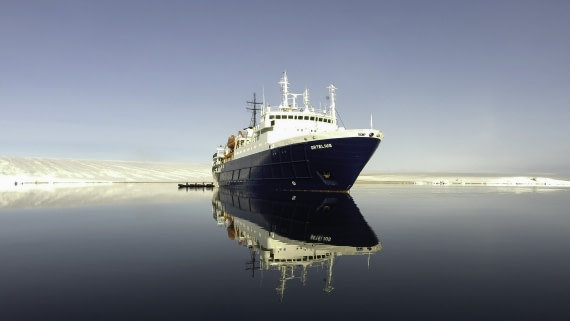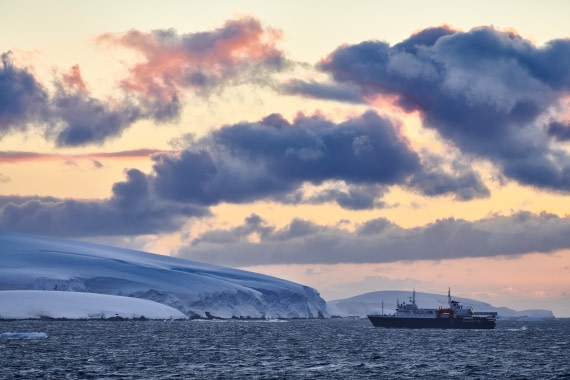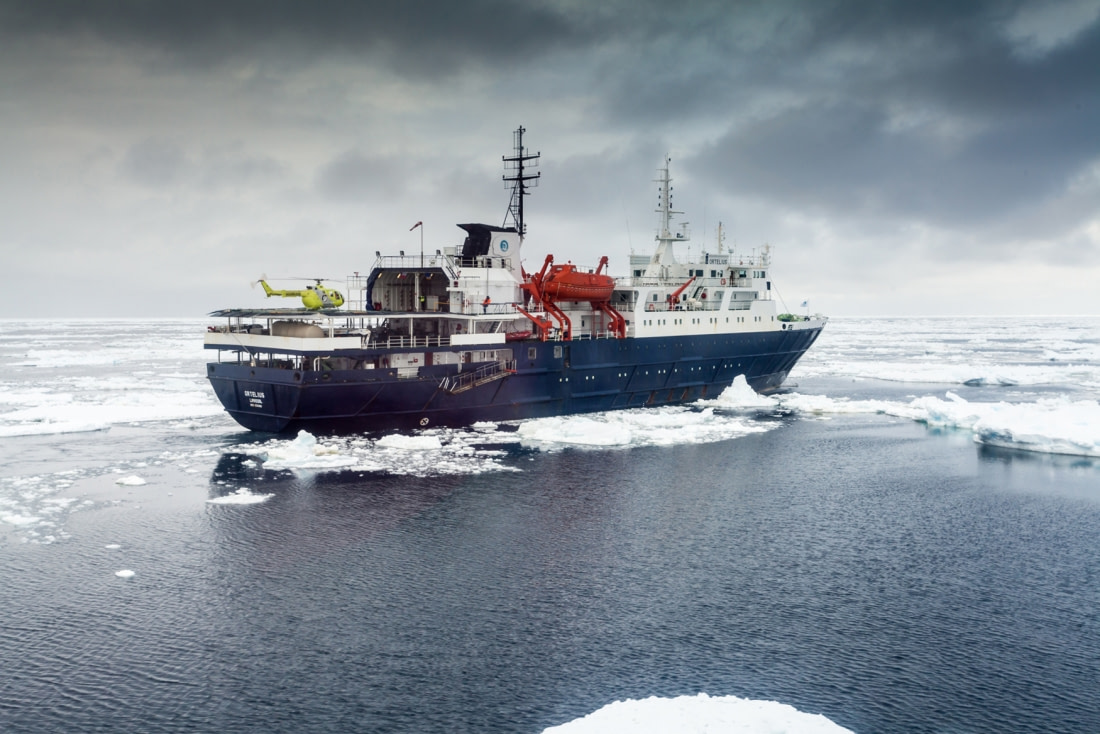| Date: |
22.11.2019 |
| Position: |
60°01’2 S 61°44’0 W |
| Wind: |
NW F5 |
| Air Temperature: |
+3 |
Overnight, we left the waters of the South Shetlands and shortly after dinner we could feel the rolling and pitching of the ship among the deeper waters of the southern tip of the Drake Passage. The weather overnight was foggy and remained like that during the period of darkness. We woke up in the middle of a thick fog. The wind speed did not reduce and it keep on blowing relentlessly with a force 4-6, and gusts blowing up to 35-40 knots. Sadly the movement of the ship and the harsh winds were a reminder that we were leaving behind the white continent of Antarctica.
Sharp at 07:45, Claudia made the wake up call and a few minutes later, Ziggy our hotel manager, announced that the doors of the dining room were open for breakfast. Later at 09:30, the staff collected the rental gear, the zodiac life jackets and the boots that the ship provided to us. This activity was done by calling the cabins per deck and was quickly finished before 11:00.
At 11:30, Claudia gave a very well documented lecture entitled "Sea Birds of the Southern Ocean". The topic of sea birds in this area of the world is vast and there are a couple of dozens of species of birds that can be seen here in the Southern Ocean. Once she clarified this fact, Claudia presented various informative slides about the most representative birds that we can see here, such as the Wondering Albatross, the Light Mantled Albatross and the Black Browed Albatross, the three largest and most conspicuous species we have seen in this trip. Later she addressed the various types of Petrels such as the Snow Petrel, the Cape Petrel and the Wilson's Snow Petrel and the Giant Petrels, again presenting, the most sighted species of petrels so far by us.
In her lecture she showed the vast distances these beautiful birds cover and the perils they face today with all the fishing activities affecting the Southern Ocean as well as with the pollution. Nicely, after the end of her lecture, the skies cleared up a little bit and on the outside decks it was possible to see many of the species she discussed in her presentation.
Also very well timed after the lecture, a Minke whale was spotted swimming close to the ship and all the eyes and attention on board turned onto this large animal. By lunch time, the skies cleared completely and we were able to enjoy the sun and many of us went to the upper decks to sit and relax.
A delicious lunch was served and this time all of the meal options were centred around a mexican fusion kitchen. Fajitas, guacamole and chicken in adobo sauce were among the options for lunch. After lunch, the ship become a quiet place for a while since many of us were enjoying an afternoon nap and only a few remained on the bridge or in the outer decks.
Later in the afternoon we had our ship's quiz with Zet and Tim as our quiz masters. Their quiz was made based on some of the staff's peculiarities, information given in lectures, recaps or general information provided at any moment during our cruise. The idea of the quiz was to have a good laugh together and have a good time while crossing the Drake Passage. In total, we had enough people to make 8 groups who choose the following names:
Group 1, "What does ABCD mean?"
Group 2, "The Type A Killer Whales"
Group 3, "Polar Bears In Antarctica"
Group 4, "The Big Eaters"
Group 5, "Weddell One"
Group 6, "Killer Whales"
Group 7, "Half Moon Bay Humpbacks" and,
Group 8, "Team Finland"
After presenting 30 questions, having fun and having a good laugh, our quiz masters Tim and Zet showed the answers. Then, after some deliberation the quiz masters pronounced the winner team. The winning team was "Type A Killer Whales", who won with 25 points. The team won a bottle of wine of their choice, glory, fame, the blessing of His Majesty King Neptune, ruler of the Seas and the admiration from all the Ortelius team.
At 18:30 we had our daily recap, Claudia showed the plans for tomorrow, our last day at sea, Sigi presented the protocol for disembarkation and Lucas, one of our guides, made a short but interesting presentation about the naming of places in Antarctica. Then, at 19:00 the call for dinner came and everybody went to the dining room. Our ship was still rocking among the waves as we sailed into a foggy night in the middle of the Drake Passage.
